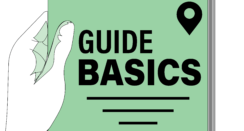The theme that brings us together in this entry is the definition of What is a graphic editor? Answering this question will be very useful for many readers. Especially those who are interested in graphic design or image editing. Whether you are a fan of graphic editing, have an image or photo to edit, or want to investigate more about the subject. This entry is for you, and as is customary in our articles, we go full with the answer.
A graphic editor is what the software or computer programs that allow the editing and creation of images are called. They are generally programs made up of a multitude of tools that facilitate or provide the opportunity to edit any type of image. Obviously, these graphic editors also allow you to import and export images to most existing image formats, to mention a few we have: PNG, JPG, GIF, TIFF, BMP, among others…
Graphics editors are divided into two categories, raster graphics editors and vector graphics. Both contain practically the same tools, and fulfill the same function (Edit or create images). However, what differentiates them is that one works better for image editing and the other focuses more on drawing and vector illustration. These will be explained later.
Now that you know the definition of what graphic editors are, we ask you not to stop reading anyway. Well, below are some points that may be of interest to you and that also complement the information shown here.
Raster graphics editor.
Let’s start with the first type of graphic editor that existed in the digital world. Raster editors are characterized by being easy-to-use editors that mainly use pixels (and not vectors) to draw shapes and figures. Today there are few raster editors that come out for computers, since in a certain way they have been overshadowed by vector ones. Not to mention that most modern vector graphics editors also have the same functions as raster ones. Being able to have both options available.
Some examples of raster editors we have the famous Windows paint classic (Come on, the one of a lifetime and that half the world knows). Although Phoxo can also be highlighted (This is less known) and most software for the creation of pixel arts (Since the rasters work with pixels).
Nor can we forget the world of Smartphones. Where we can find a multitude of raster graphic editors, which, contrary to computers. The raster images do have a strong presence in the mobile world. Being more raster editors than vector ones.
Vector graphic editors.
Now that we’ve talked about raster editors, it’s time to talk about vector graphics editors. These could be considered as the ideal editors for illustrators. Since its tools focus more on vector drawing and not on pixel drawing. If you do not understand what is the difference between these, we will explain it to you in a very brief and simple way…
Vectors, unlike pixels, allow the creation of dynamic figures. What does this mean? What if, for example, we make a square with vectors, and we want to deform it to such an extent that it looks like a rectangle. We can do it and it will not lose quality. And even if we want to round off one of the corners of the square, it can be done and all this without drawing a new figure, always using the same one.
On the other hand, if you wanted to do the same with pixels, you would have to make the rectangle manually and once drawn, it cannot be altered in any way. Not to mention that if the dimensions of the image are modified (It becomes big or small). This will lose quality, which does not happen with vectors.
To mention a few vector graphics editors we have the well-known photoshop, firealphaca or a lesser-known but equally practical “Inker”. And if you dare to investigate, you will notice that these editors are usually considered more like illustration software and in the background for image editing.
Which editor do you recommend starting with?
To conclude, we want to briefly address this question… From my own experience, it is recommended to start with a vector graphics editor that also has functions to edit images. The most recommended is photoshop, although if what you are looking for is a free editor. You might consider getting Firealphaca and Phoxo. Both software are very easy to learn and master. You can easily achieve professional results.
